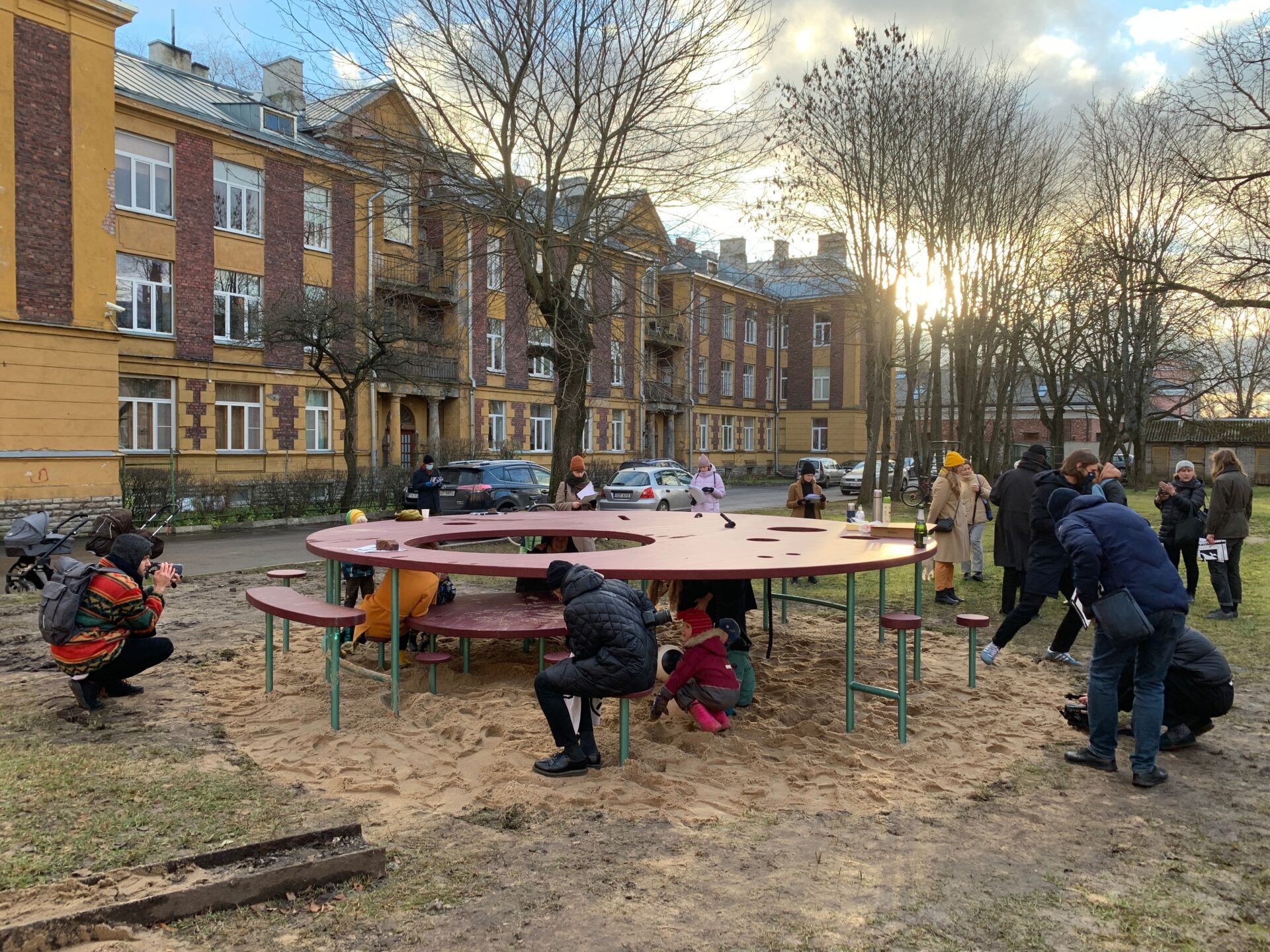“Lauamäng” (literally “table game”, a play on the word for “board game” – Trans.) is a public playground. The structure consisting of two platforms and reminiscent of a table creates new possibilities for parent-child interaction. The idea behind the toys and holes is to suggest ways of playing together. Under the tabletop is a place where kids can have their own world, where they can disappear from their parents’ eyes.
The installation was made in the frame 2020 Artishok Biennial, where the theme was “copy”. The architects were propelled to investigate ways of designing a playground after noticing monotonous playgrounds lacking in artistic motifs. Many playgrounds are also designed only for tiny tots, and older kids and parents are left out.The question came up: could a playground meant for different uses and users be designed within existing safety standards?
The architects also saw the untapped potential of a playground as an art object or public sculpture. A playground could be more than a facility for sliding and climbing. In that sense, there is something to be learned from Soviet-era metal jungle gyms – their abstract, simple form does not dictate or dominate but supports the creation of all sorts of games and interpretations.
The technical solution chosen for “Lauamäng” is an experiment – the cross-laminated timber used for the tabletop was not actually meant to be used this way. To leave as much room as possible to run and play underneath the table, the legs of the chairs and table are of bent metal pipes, which join each other under the sand. Use of sand partly as filler, partly as surfacing, is a conscious choice to make the area under the table more like a sandbox.
















































































































































































































